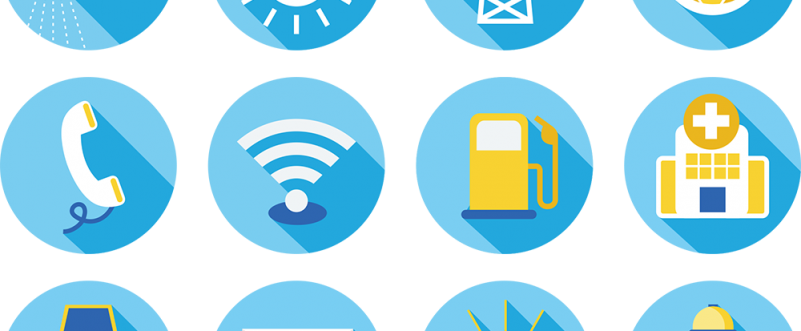The BlastPoint team has finally recovered from a whirlwind—and we mean that in the best possible sense—trip to Phoenix for the CSWeek Conference in April.
If you’re not familiar with this annual utilities industry extravaganza, “CS” is short for Customer Service, and “Week” refers to the entire week-long experience being dedicated to supporting those good folks who answer the phones when your local water main breaks or your electricity goes out in a storm.
It was our first time taking part in this conference, and we’re so glad we did. We already know that BlastPoint’s platform is making a visible difference for natural gas companies—cutting costs by enrolling more customers in e-billing, for example, and saving trees by sending fewer pieces of snail mail.
But we were eager to meet other players in the energy space to share how our software solutions could help them, too. For instance, location analytics and predictive behavioral tools to help them better understand their customers and, thus, make more-informed, community-minded business decisions.
With thousands in attendance at CSWeek, and too many networking opportunities to count, we met loads of great people who shared our enthusiasm for exploring this idea of customer engagement through data—not as a tool for privacy intrusion, but as one that allows for the use of new avenues for communication where old ones no longer work.
And yet, despite our excitement to share the dazzling whiz-bang of our software tools, what really stole the show were the adorable, tiny, plastic light-up people we had laser-cut by Ponoco for our trade show booth. In our pop-up living room at the exhibitor hall, our colorful, tiny people sat before darling miniature houses and storefronts that adorned the incredible backdrop that artist Sarah of Sarahwilldesign.com helped us create.
We’re still not sure who was more excited about those mini lightup people: us, or the hundreds of customer service reps we chatted with over the course of the week.
But those lightup people, who now bring us joy on a daily basis by living permanently on a shelf in our office, aren’t just eye candy. They represent one of our most important company goals: Creating equity for the wide range of real humans living inside real houses, who embody a diverse range of real human desires, values and experiences.
It may seem to some that our business boils down, simply, to math—or, actually, really complex algorithms, if we may be slightly more precise. But in truth, we see our business as not just a mission, but a responsibility, to figure out who needs help, why they need it, what they need, and where they are located so that help can reach them.
With this information in hand, then, public utility companies have the power to adjust the way they deliver services, messages, and programs in order to adequately serve their customers.
Which was a theme we heard over and over at CSWeek, and it took fascinating different forms.
Utilities are embracing technology like never before, and with software solutions like ours alongside a variety of user interfaces to choose from, they’re making major strides in boosting customer engagement and increasing satisfaction.
How? By diversifying the communication methods they use to reach customers.
Tacoma Power is experimenting with video chat inspections to help clients who are experiencing service problems. Remote yet face-to-face, technicians can inspect heat pumps or evaluate insulation over video, thereby reducing travel costs and fuel consumption. This minimizes their carbon footprint and solves more customer problems at breakneck speed, as compared to doing business the old way. Using video technology, companies can expect higher, faster payment rates and better overall customer engagement.
Others public utilities like Direct Energy are using voice activation technology to leverage the interconnected nature of today’s modern homes. Customers with voice-controlled devices like the Amazon Echo and Google Home can quickly receive and send hazard notifications, or learn about power outages or water main breaks in an instant. They can pay their bills automatically through these devices or get more in touch with their energy usage, as long as the software infrastructure is in place to support that kind of information on the utility company’s side.
SRP (Salt River Project Power and Water) in Arizona has long been successfully texting its customers to spread the word about severe weather and power outages. But more recently, they’ve seen an uptick in engagement and satisfaction using text to let customers know that a bill is due soon, when a payment is past due, by accepting text payment and sending confirmation when a payment has posted successfully. What’s more, they’re using text to send smart energy alerts to let customers know how much power they’re using, which could save lives if, say, a space heater were left on accidentally. This is a huge safety and cost benefit for both customers and utilities.
The City of Ocala Electric Utility in Florida is focusing heavily on whole-community access to energy, especially for those without access to modern technology. By installing digital payment kiosks at public spaces like libraries and malls, they’re making it easier for those without smart phones or voice detection devices to pay bills on time, postage- and hassle-free. This prevents billing defaults and creates equity for those customers who may be at risk of defaulting.
New and exciting ways to communicate with and serve consumers continue to develop as technology makes more methods easier to use. We look forward to sharing more—and more meaningful—customer insights with public utility companies so that more of their customers have equal access to all the services they need.

